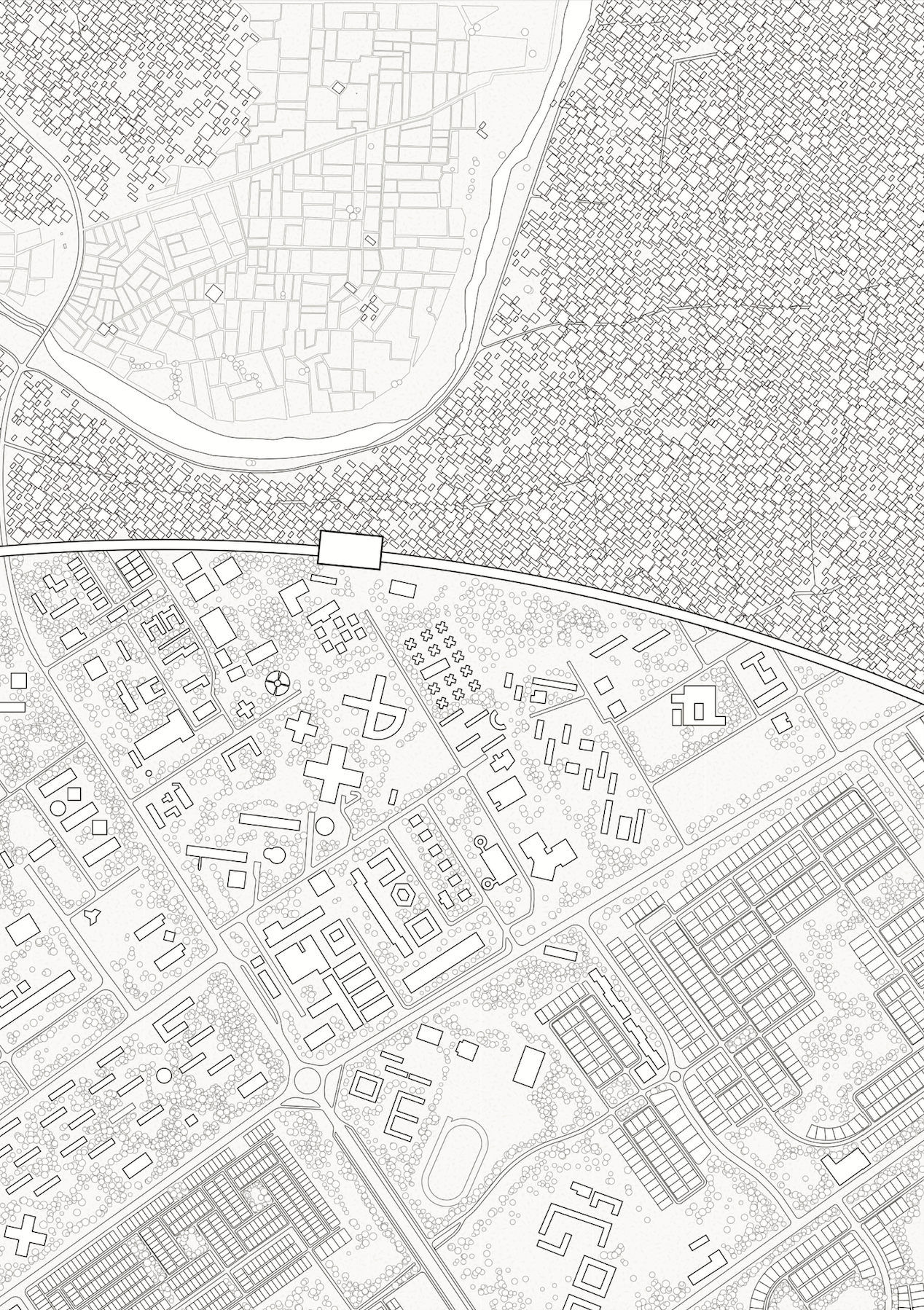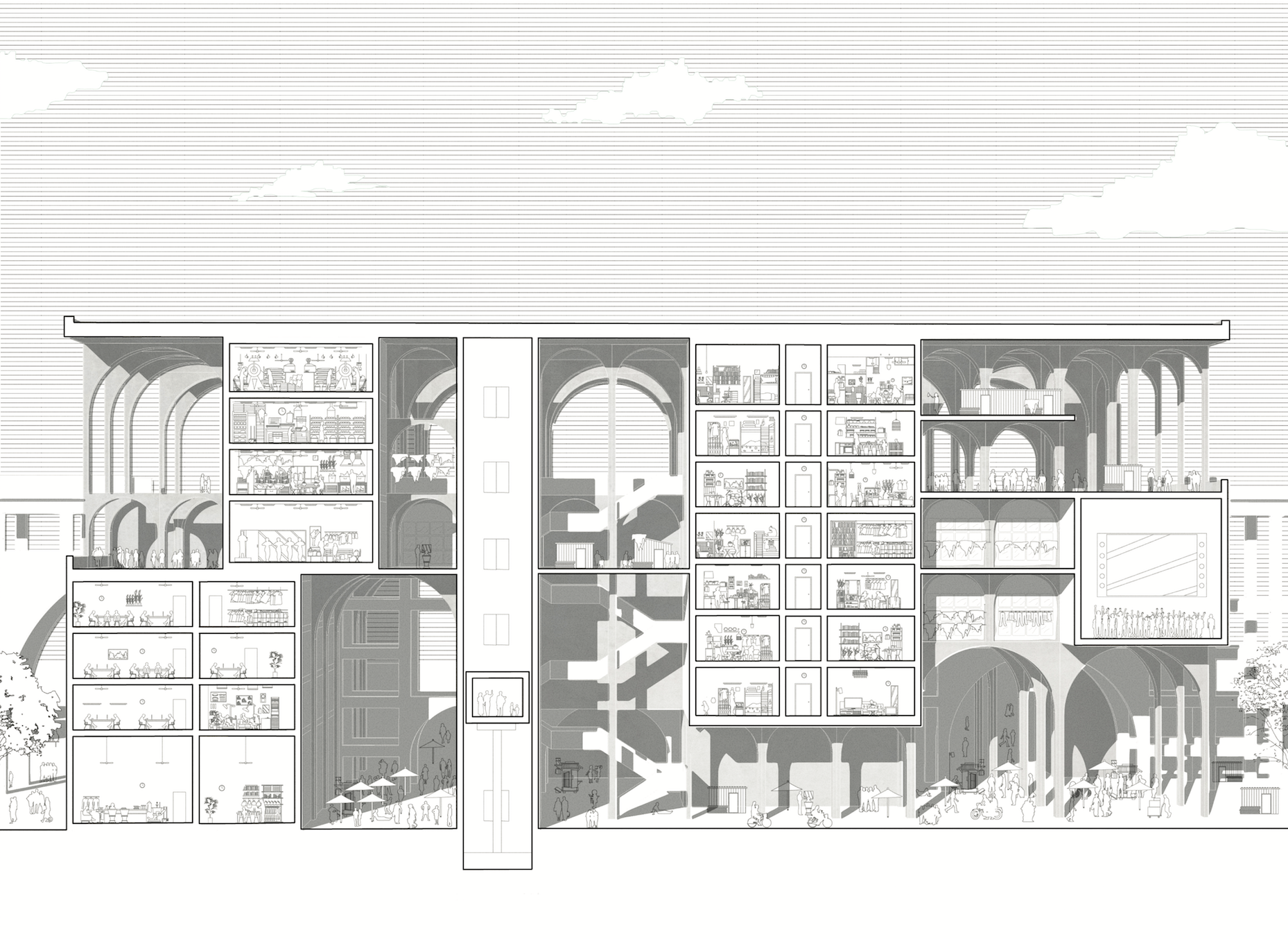Chandigarh refuses to break away from the master planning of Corbusier. It is and will continue to become a relic of his modern city. Maintaining Corbusier’s urban ideals has become increasingly onerous up against the demands of contemporary Indian urbanization. Tenacity has pushed development to its periphery. The region is becoming both the new populous and urban centre of the city while still operating as geographically displaced and fragmented zones. Embracing this resistance for change and opposition of growth, the project turns outwardly on Chandigarh. With a critical outlook of the metro lines proposed in Chandigarh’s 2031 smart city plan, a counter proposal is made for a single metro that would encompass the entire city.
This above ground network would define a clear physical boundary between Corbusier’s city and its periphery. The infrastructural project would act as a large scale framework, accommodating activities which are rejected by Corbusier’s idealised vision of Chandigarh. Increasingly facilitating the reorientation of the city to its periphery, defining an ever more distinct boundary while connecting the periphery through the use of metro transportation. Ultimately fulfilling Corbusier’s vision of Chandigarh to sit as an island in the vastness of the Punjabi plains.
This above ground network would define a clear physical boundary between Corbusier’s city and its periphery. The infrastructural project would act as a large scale framework, accommodating activities which are rejected by Corbusier’s idealised vision of Chandigarh. Increasingly facilitating the reorientation of the city to its periphery, defining an ever more distinct boundary while connecting the periphery through the use of metro transportation. Ultimately fulfilling Corbusier’s vision of Chandigarh to sit as an island in the vastness of the Punjabi plains.
 100 year future
100 year future
Peripheral Functions


Top: Track Framework
Bottom: Station Framework
Bottom: Station Framework
 100 Year Future
100 Year Future


Left: Wall Around City
Right: Track Level
Right: Track Level
